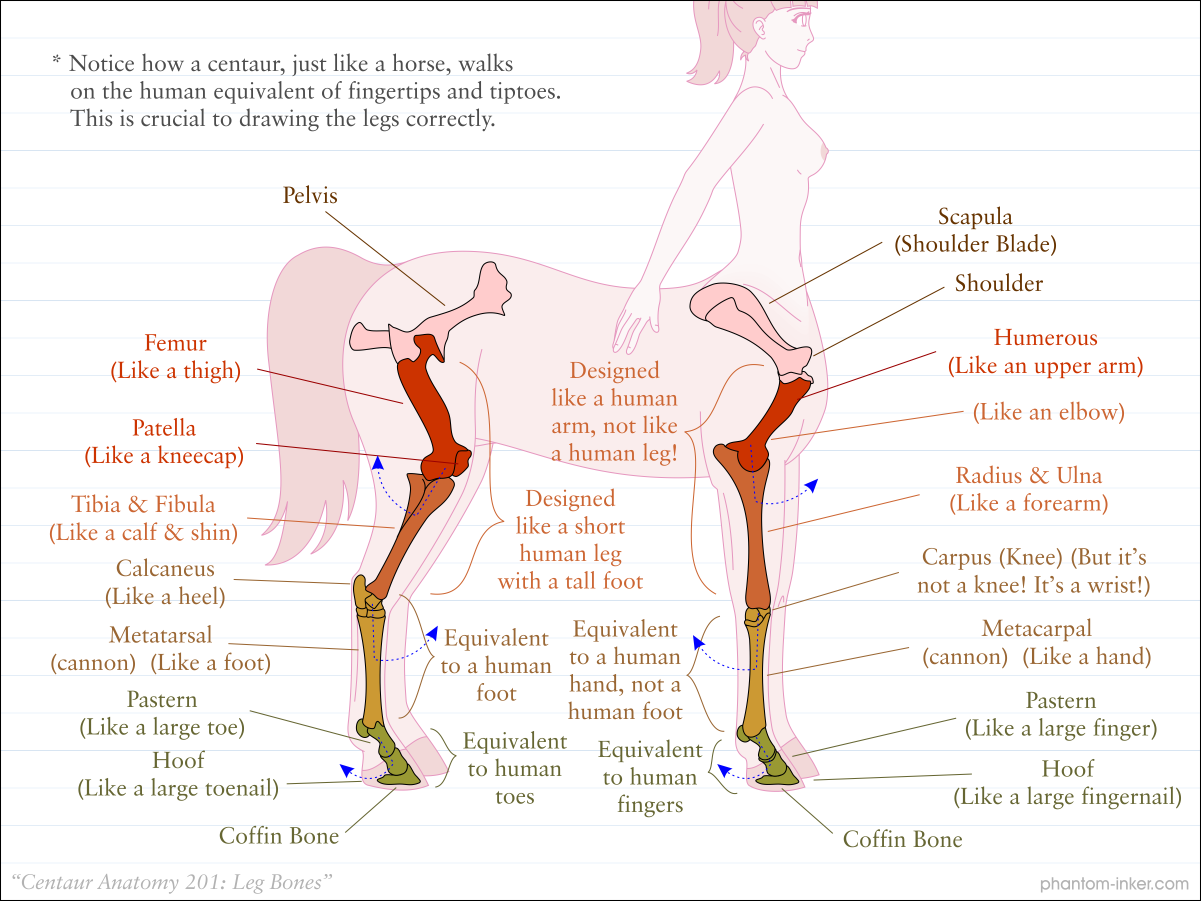Image Info
- Posted: August 29, 2012
- Size: 298 KB
- Pixels: 1201 x 901
- Mature: Yes
- Explicit: No
- Views: 2306

Usual disclaimer: These are my opinions! There is no real physical centaur to compare against, so the best I can do is make an educated guess. If you prefer a design other than this, that's fine, but this is what I'm going to keep drawing. If you disagree, fine, but do so politely, and above all, please don't ask I draw things your way. I know how I think it'd work, and that ain't gonna change.
So it's time to graduate past the 100-level tutorials and start digging into the details. In the 200-level tutorials, we'll talk about musculoskeletal structure, in detail, so you can see how a centaur holds together; and in the 300-level tutorials, we'll talk about circulatory, respiratory, digestive, and excretory systems.
So this is Centaur Anatomy 201: The Leg Bones, in detail. Last time, we saw how the joints fit together in their broadest aspects. This shows how the leg bones work to form those joints.
The dotted blue arrows show which direction a given joint can generally bend.
The color codes correspond to equivalent regions on human arms or legs, for comparison:
The most common mistake artists make when trying to conceive of an equine leg is to assume that the pastern is equivalent to a human foot. In reality, equines (as with most digitigrade creatures) walk on tiptoes and fingertips: The cannon is not like a shin or calf, but rather is actually a long, narrow equivalent of a human hand or foot! Once you conceive of the upper parts of the legs as being the actual leg, the entire rest of the design is actually pretty easy to understand.
So Lucy here doesn't need high-heeled shoes: Her heels are a good 18 inches off the ground whether she likes them that high or not ;)
Next time, we'll expand this drawing to include her ribcages, spine, and arms, so you can see a complete picture of how her bones fit together.